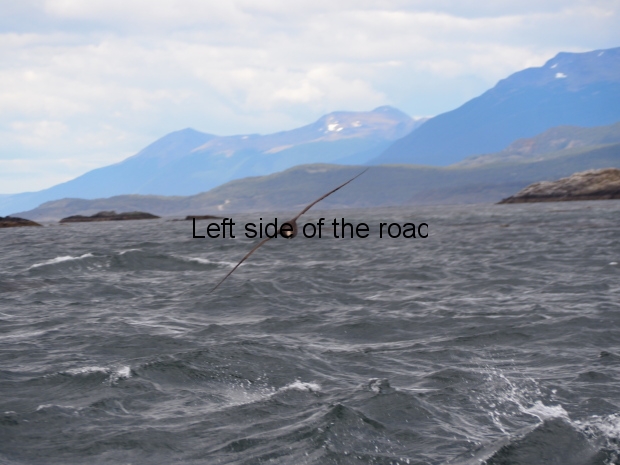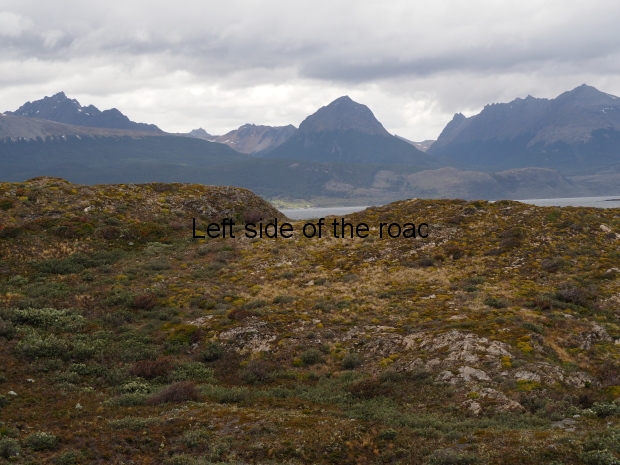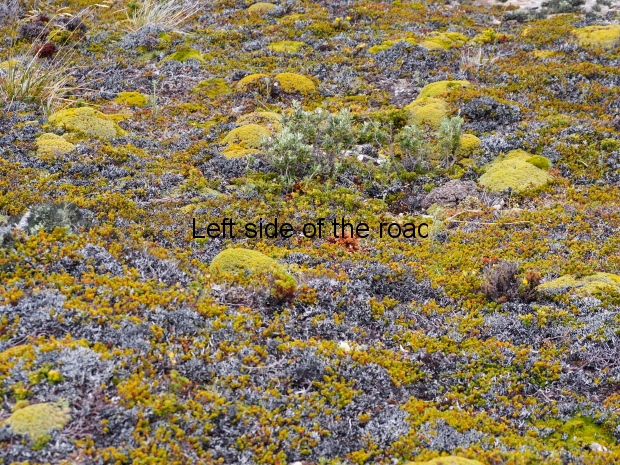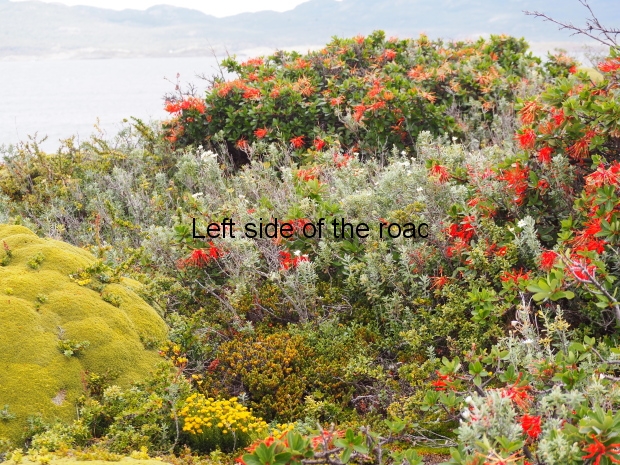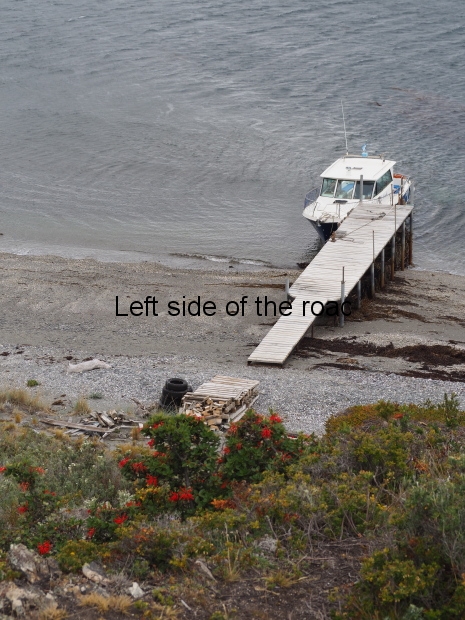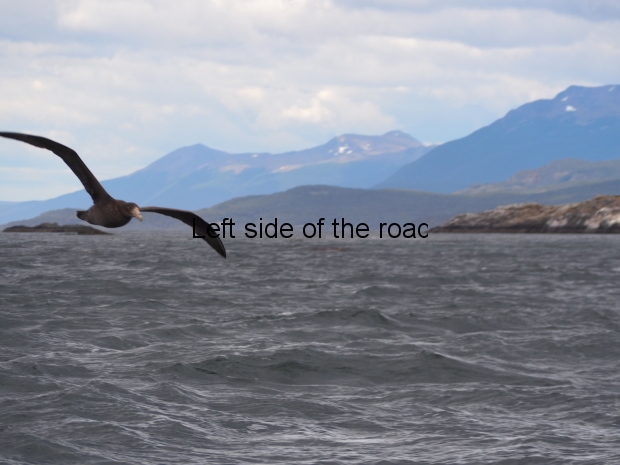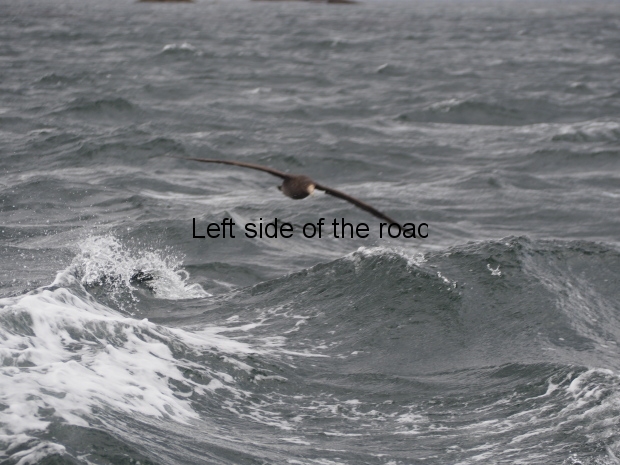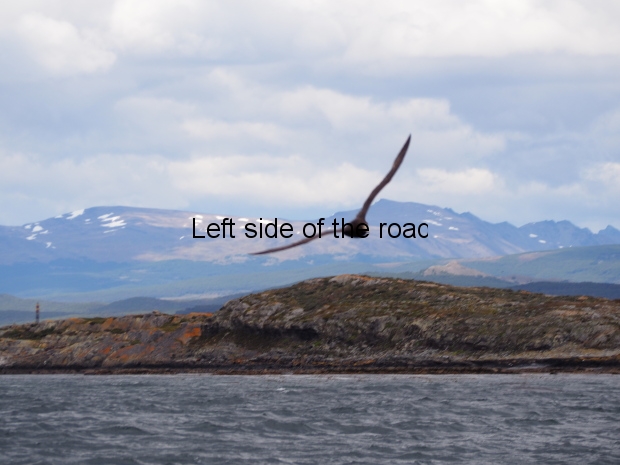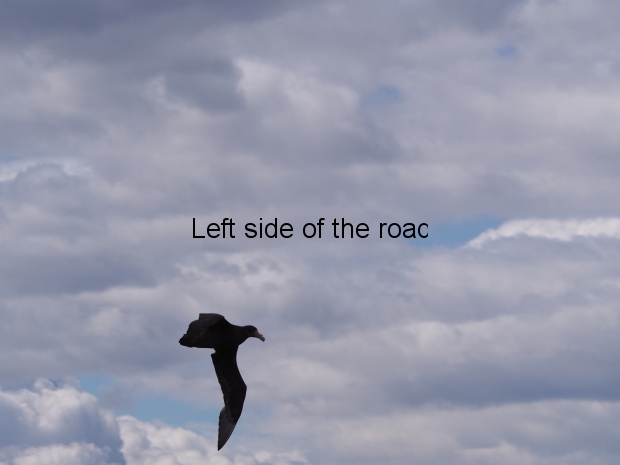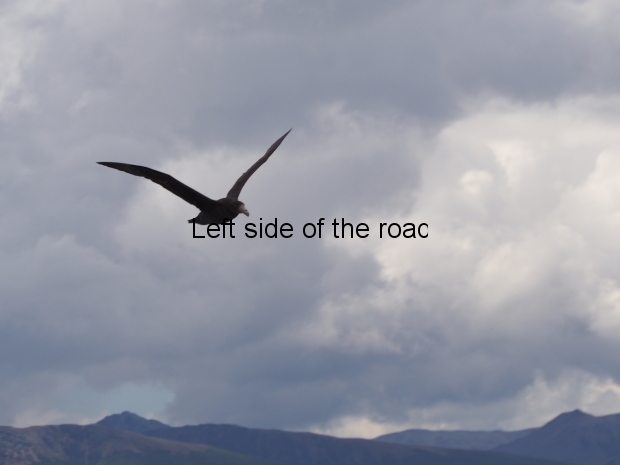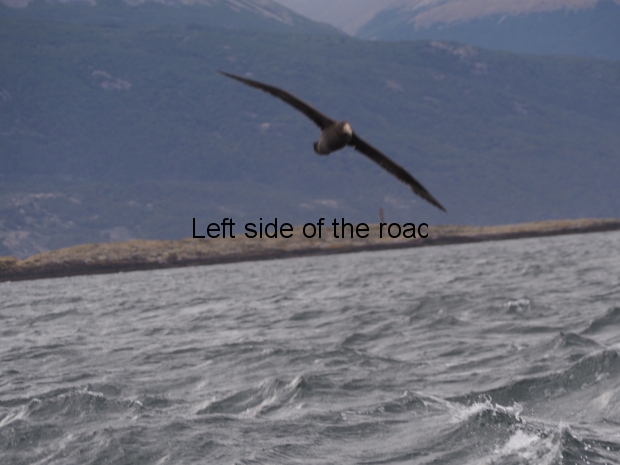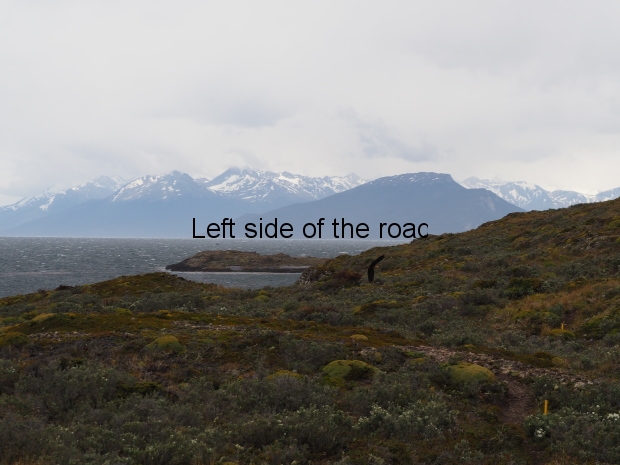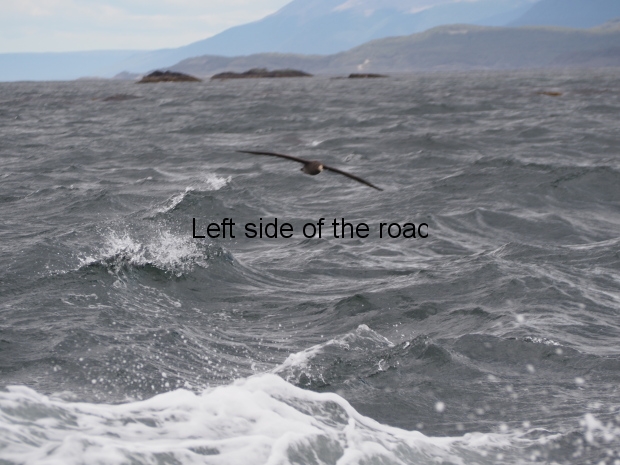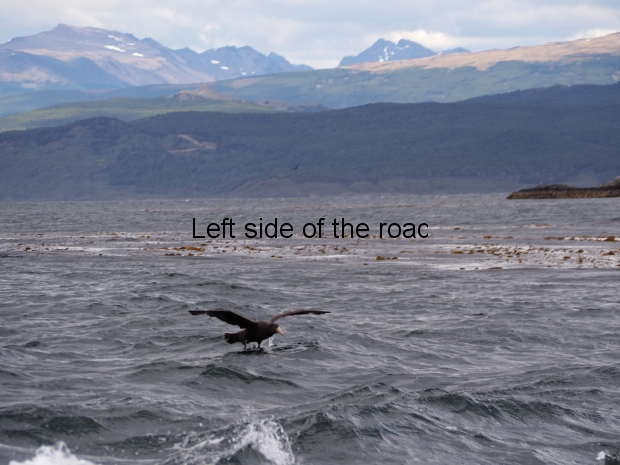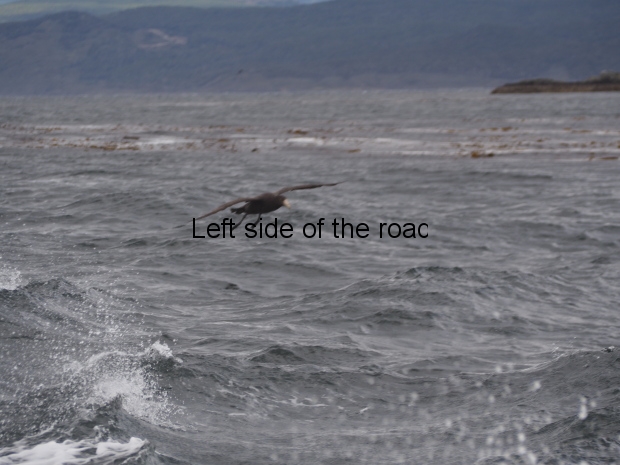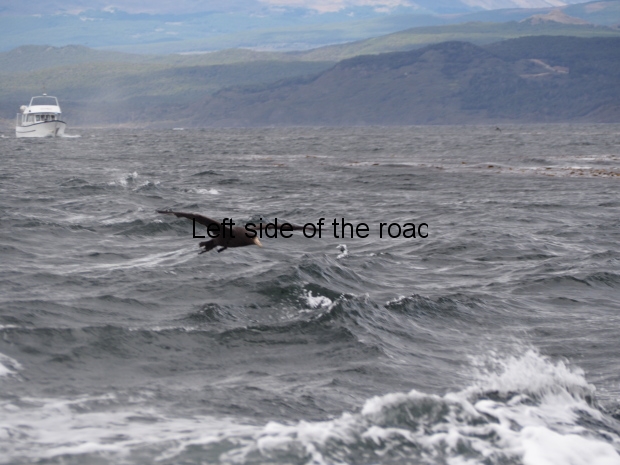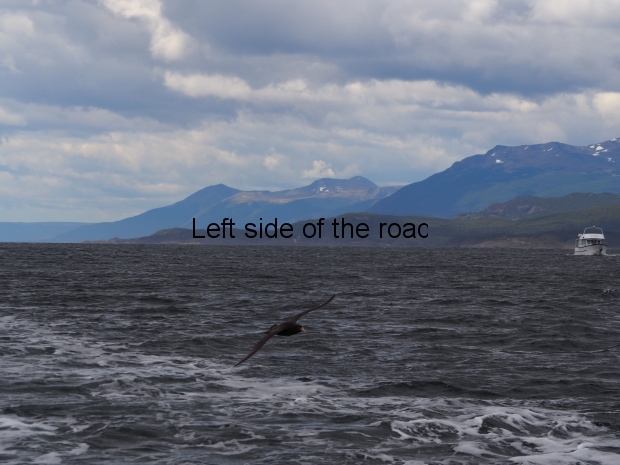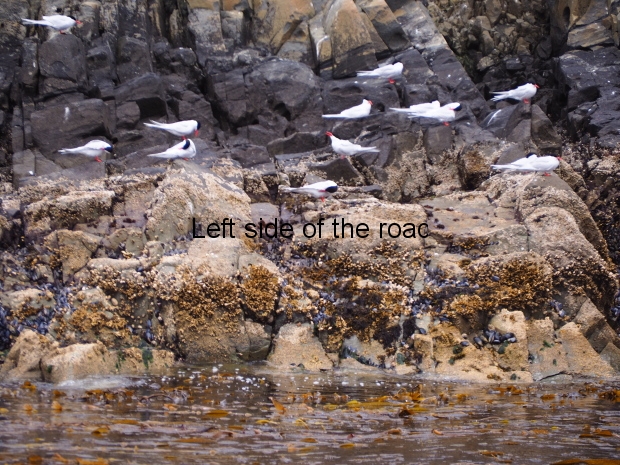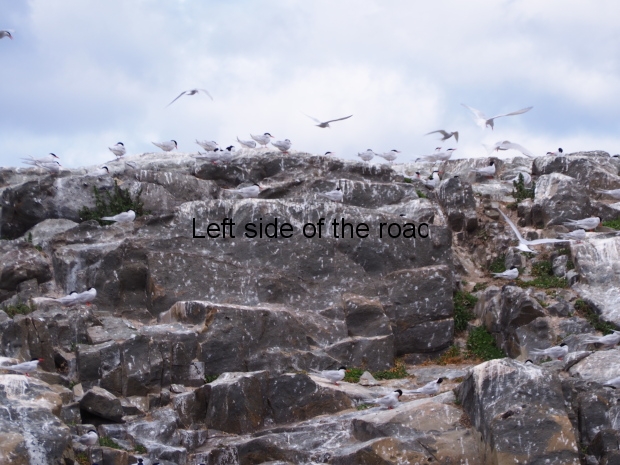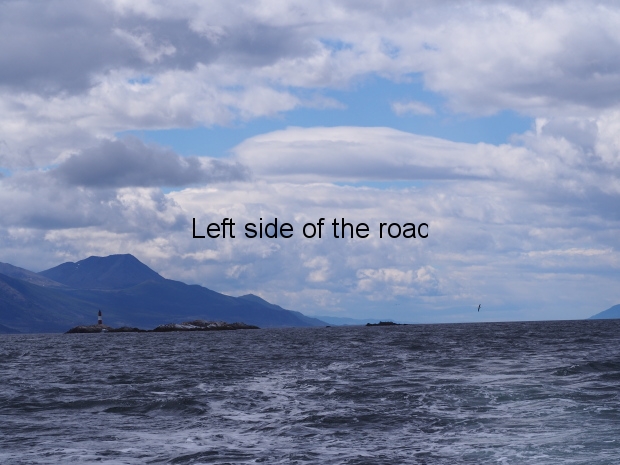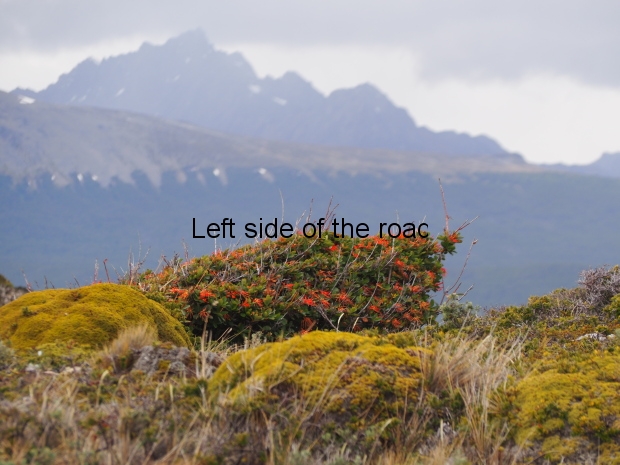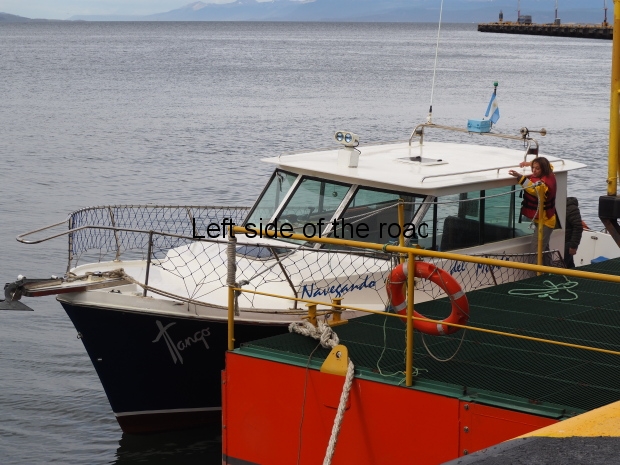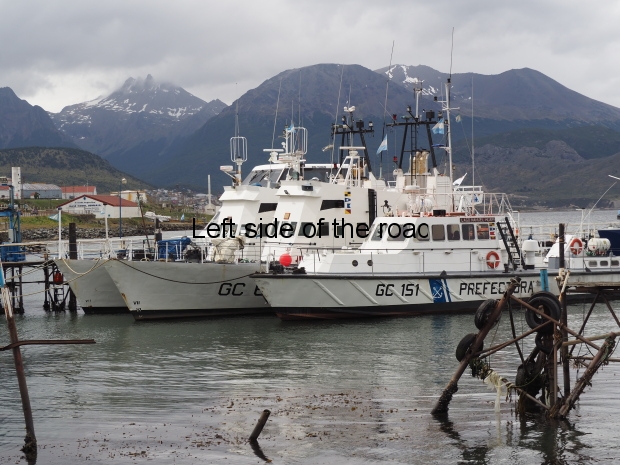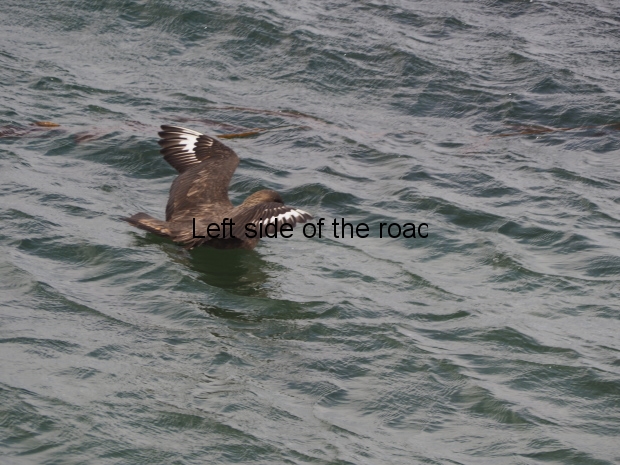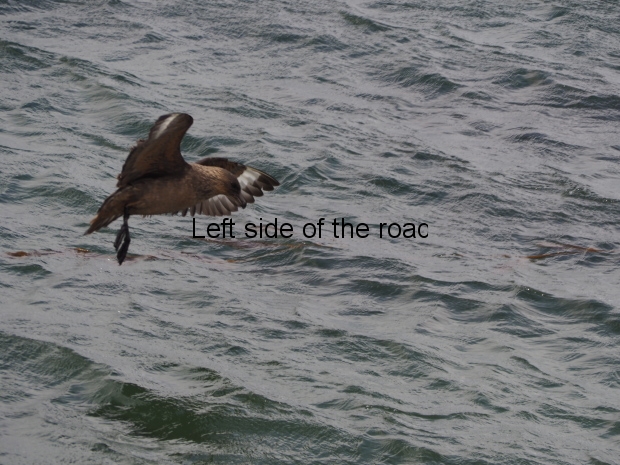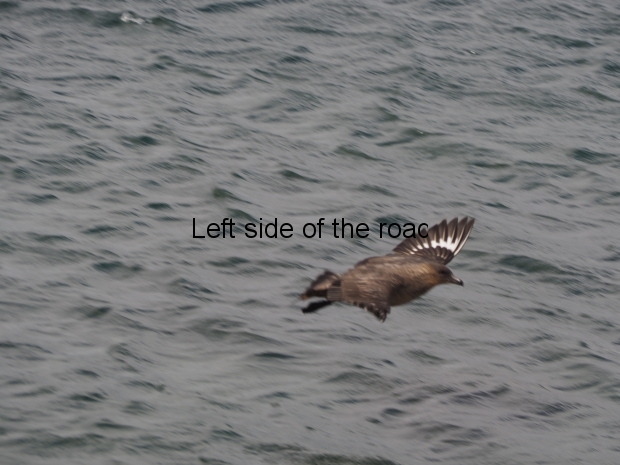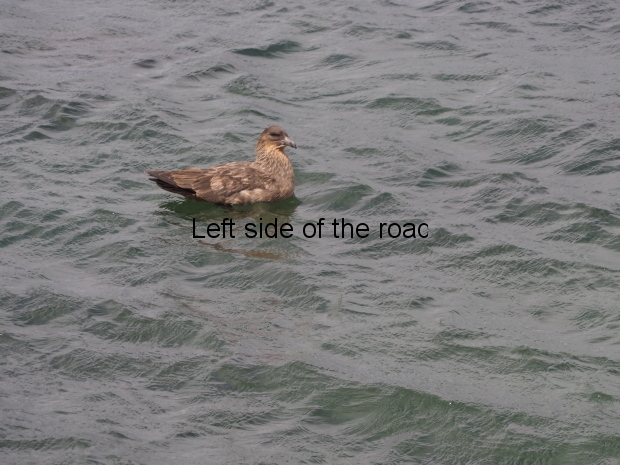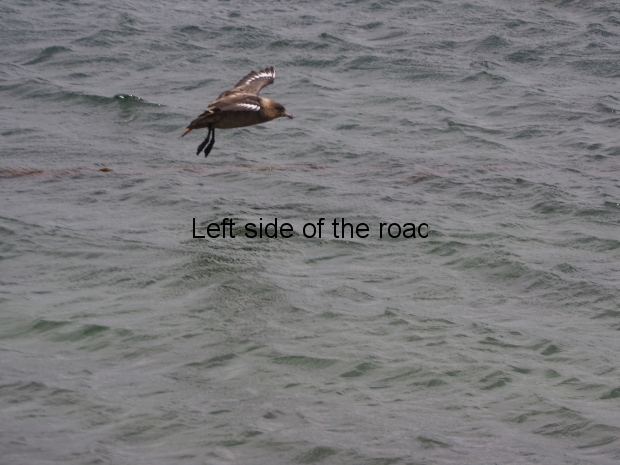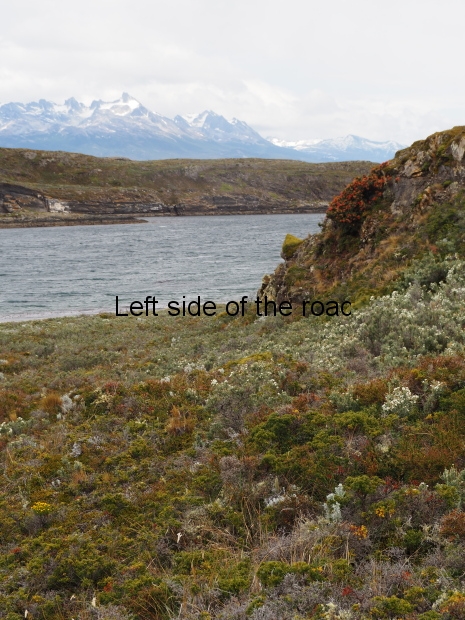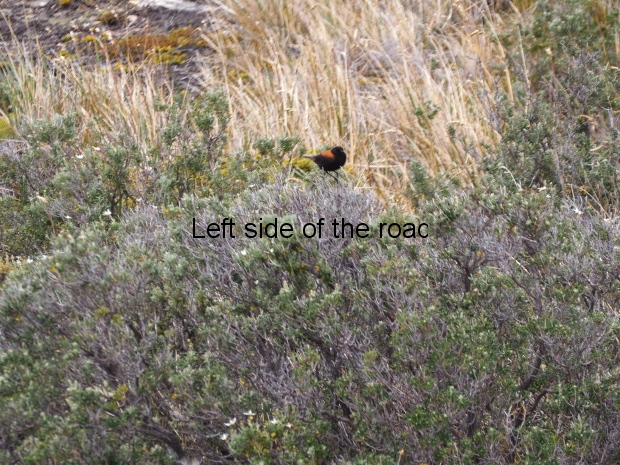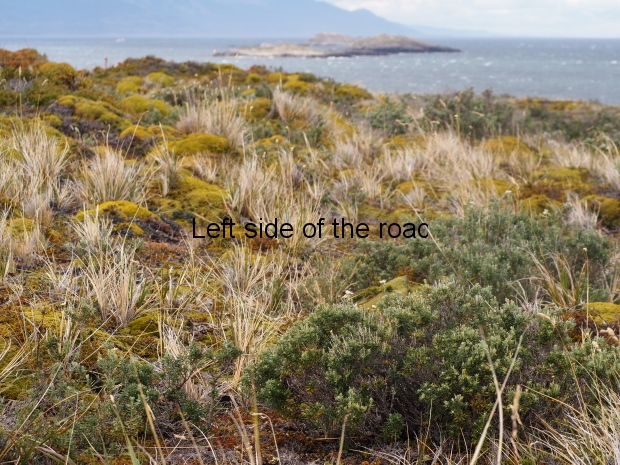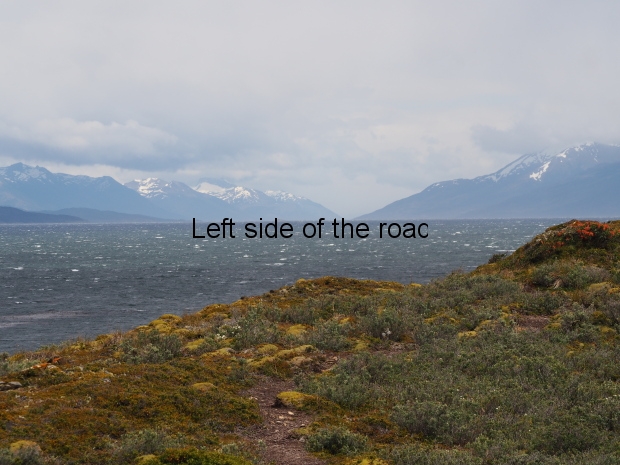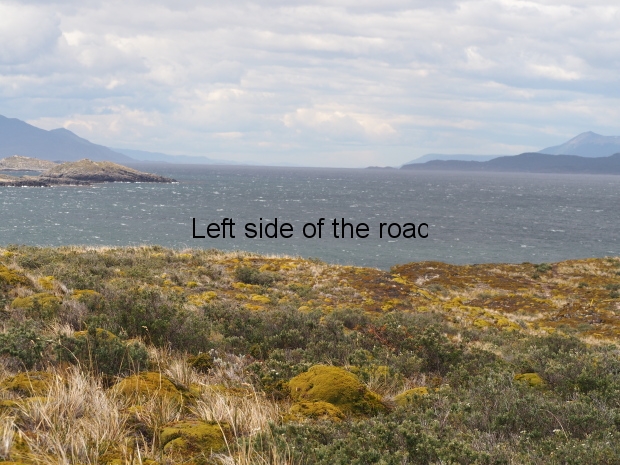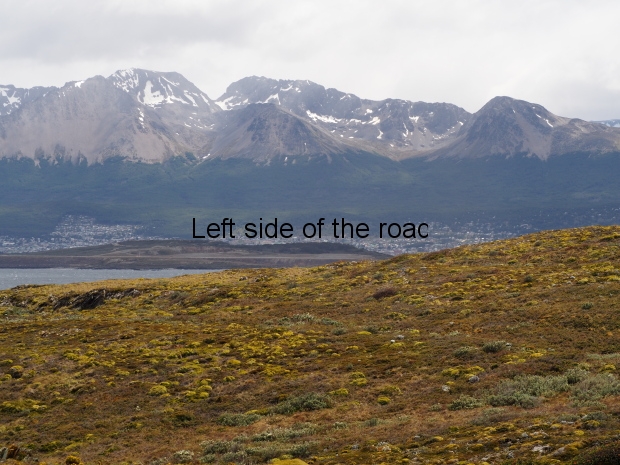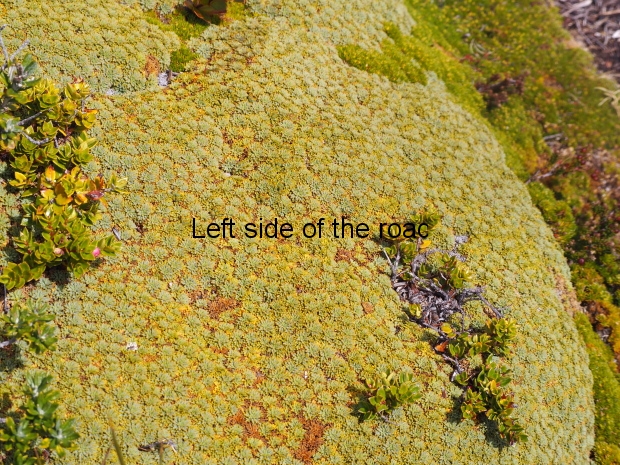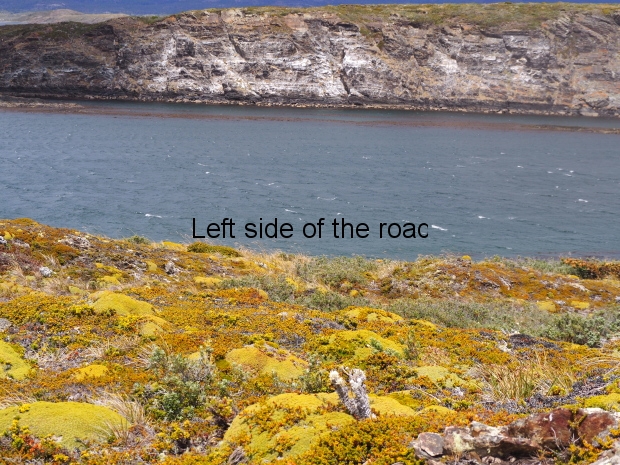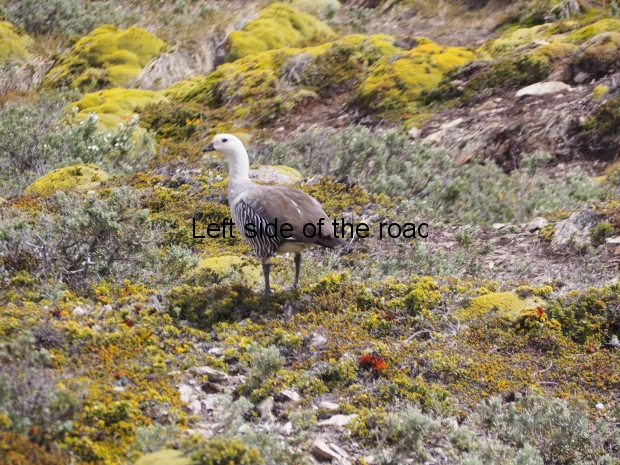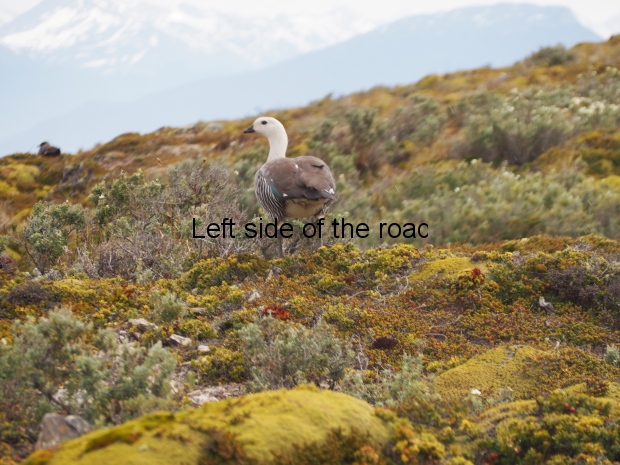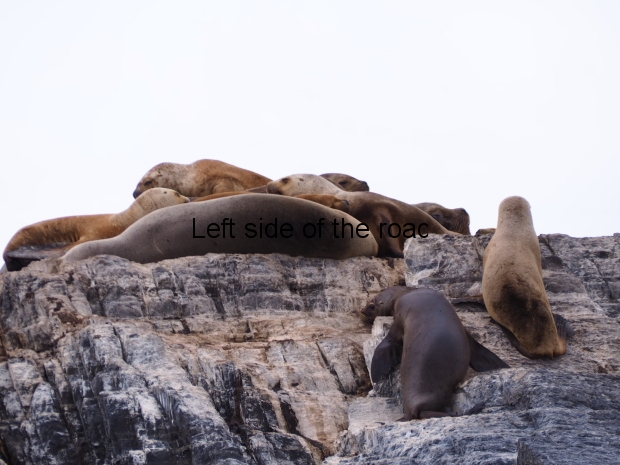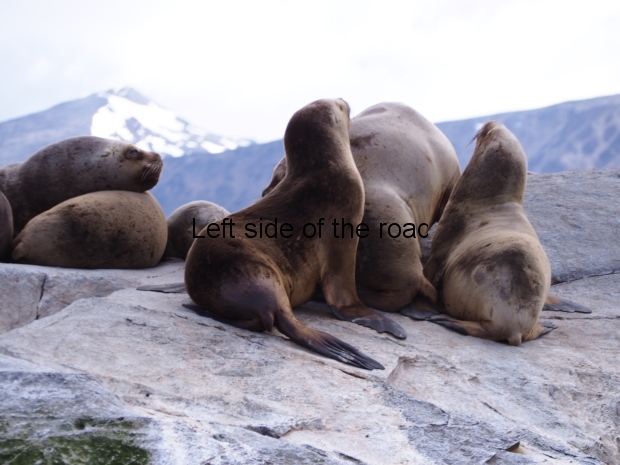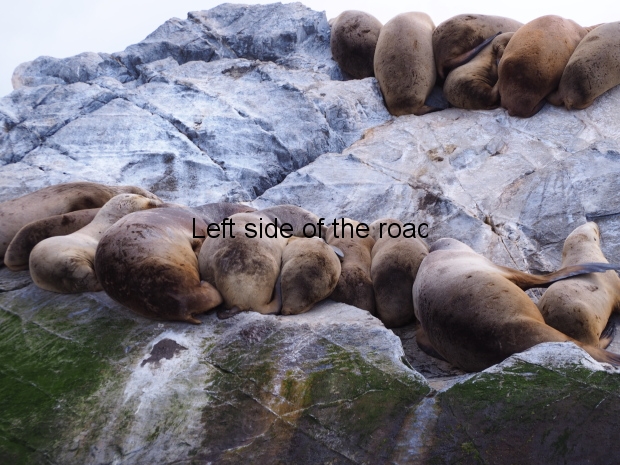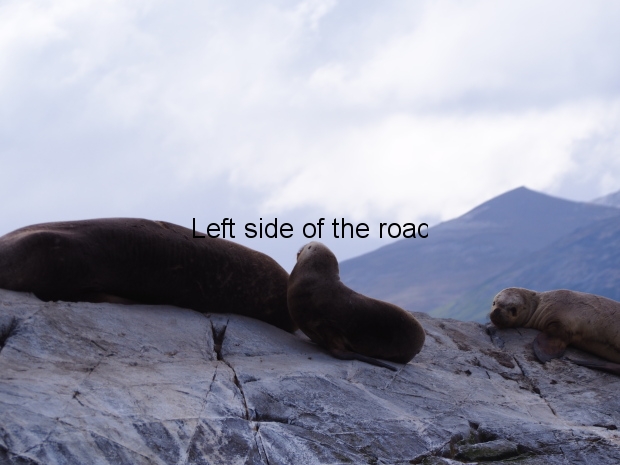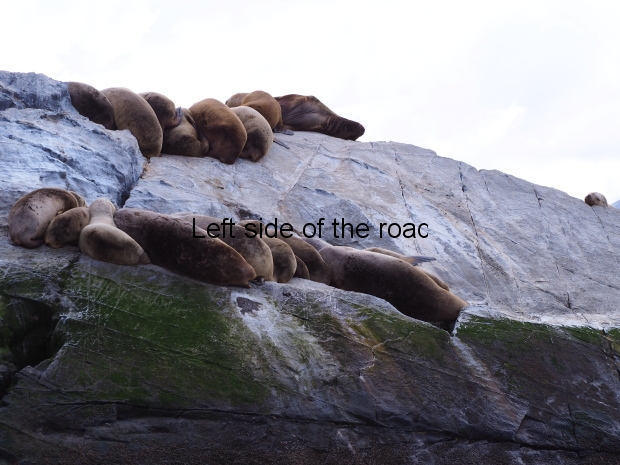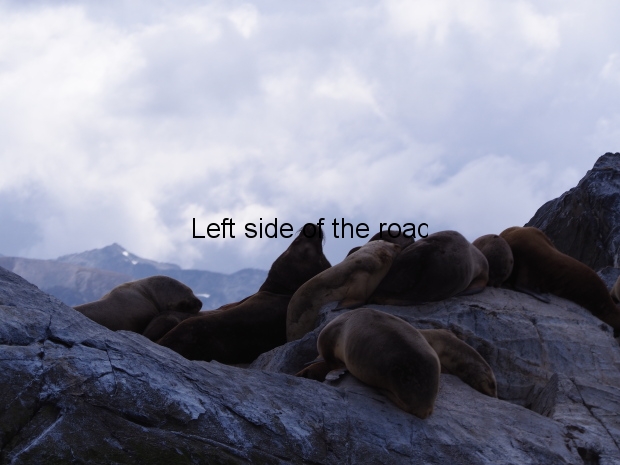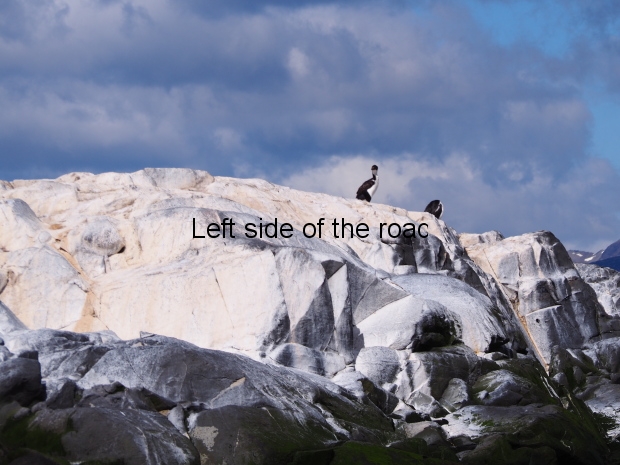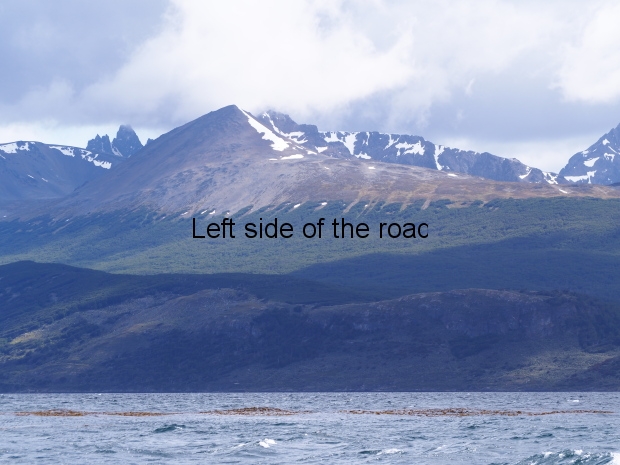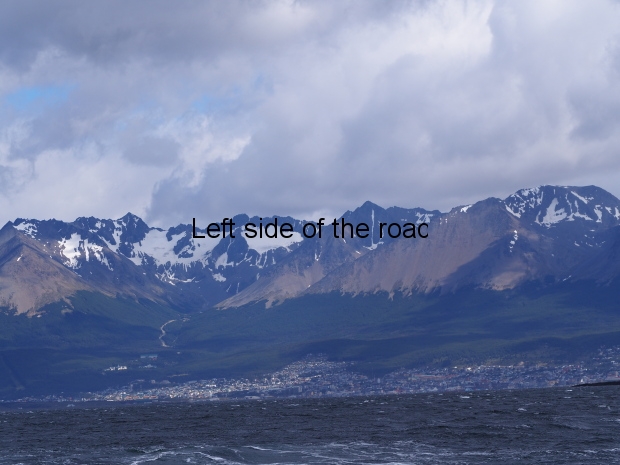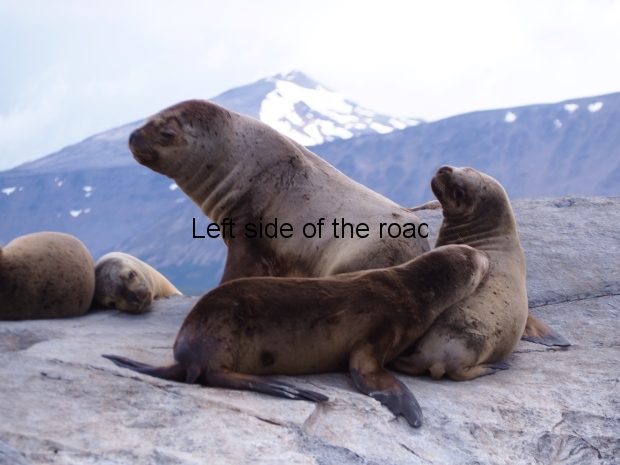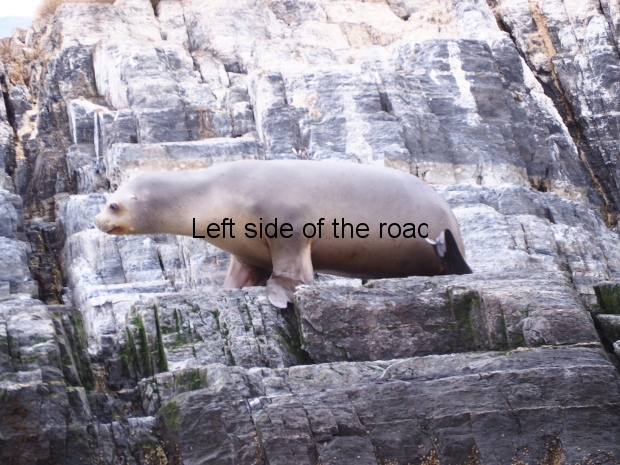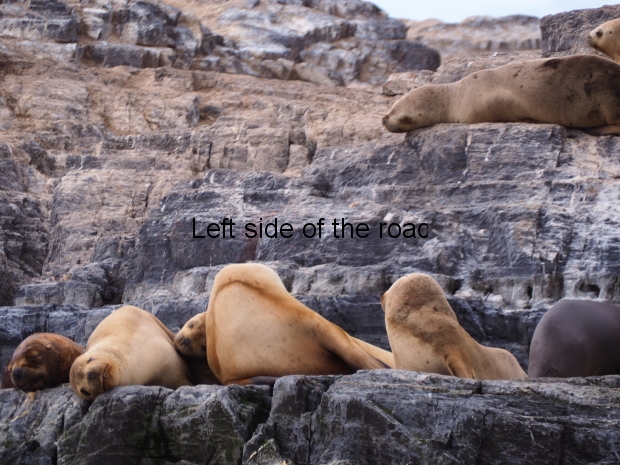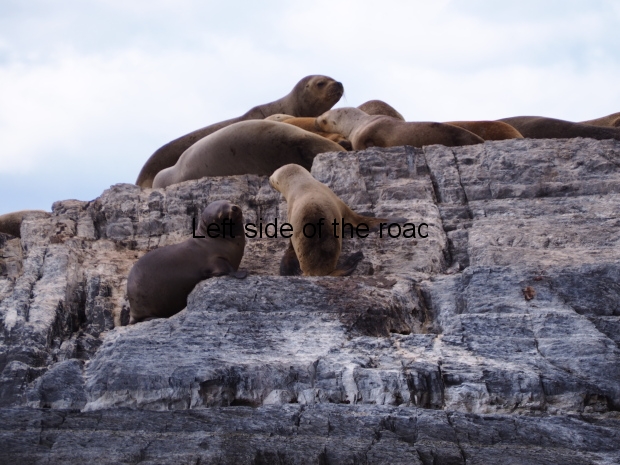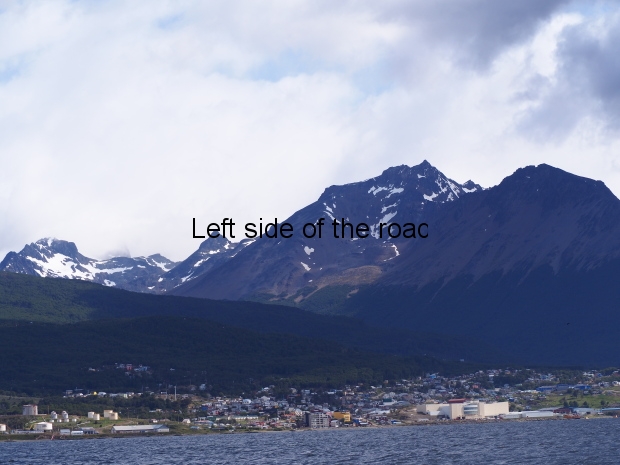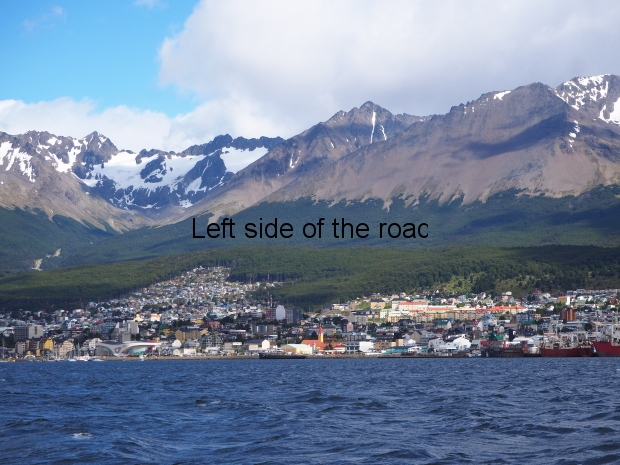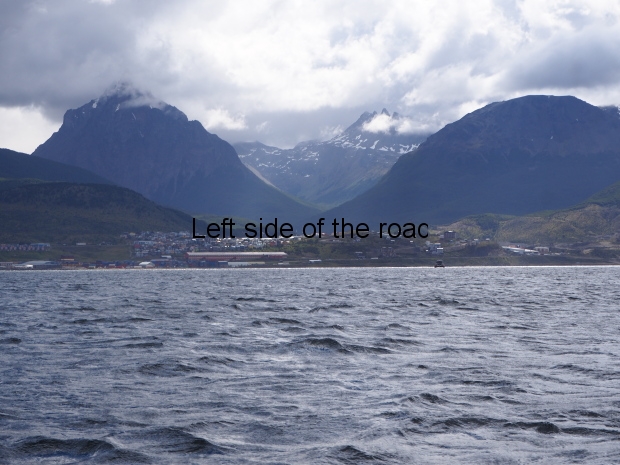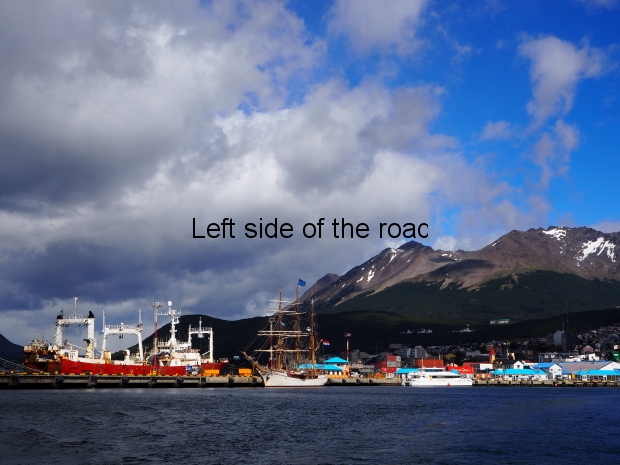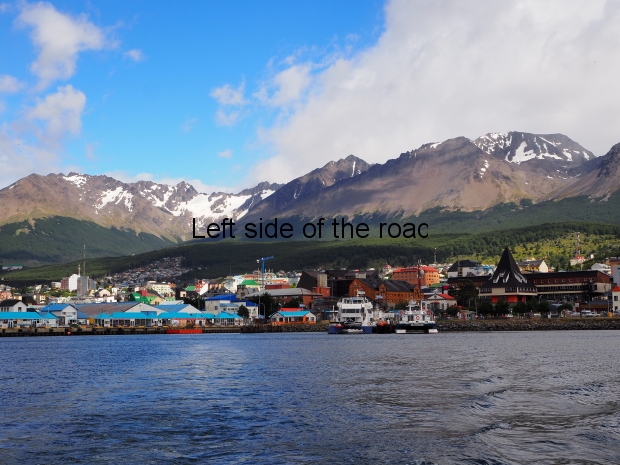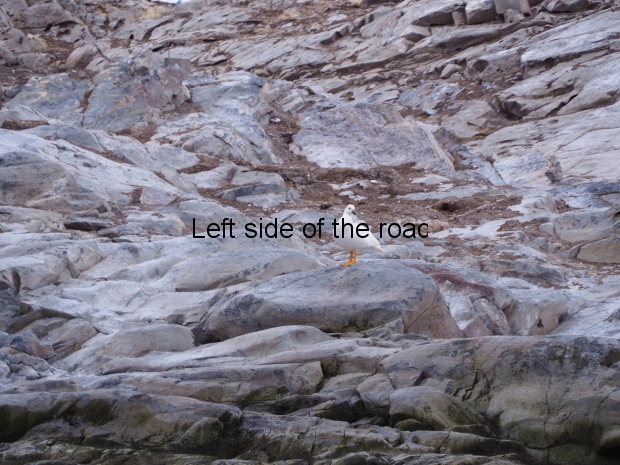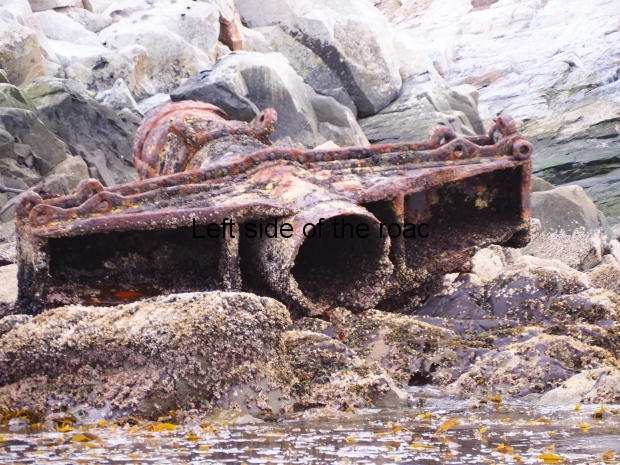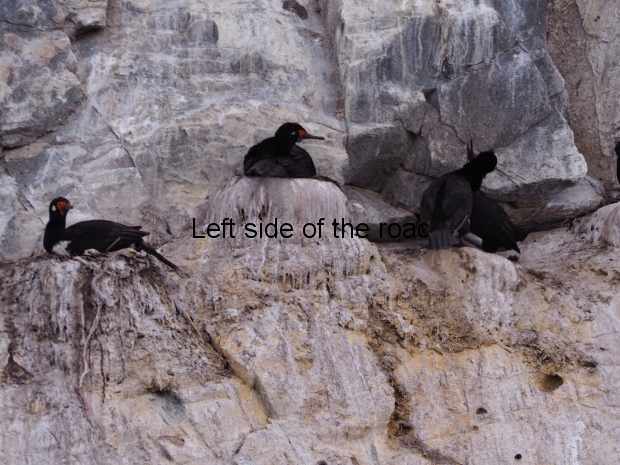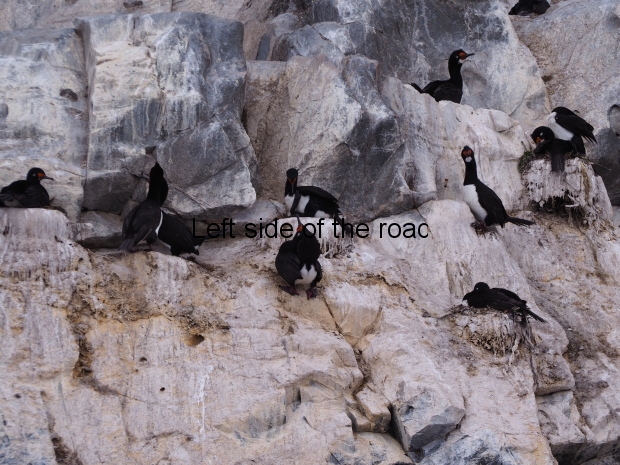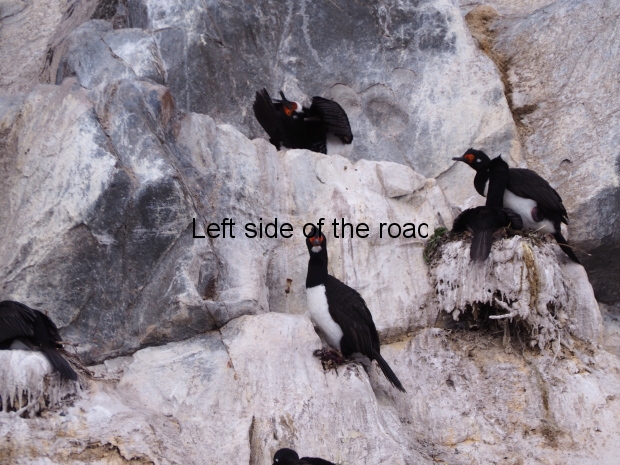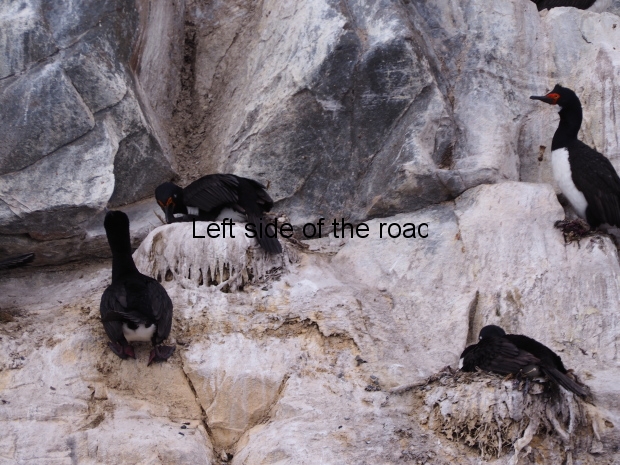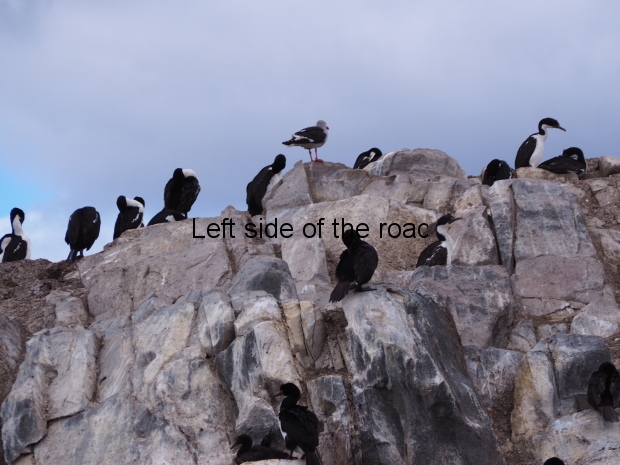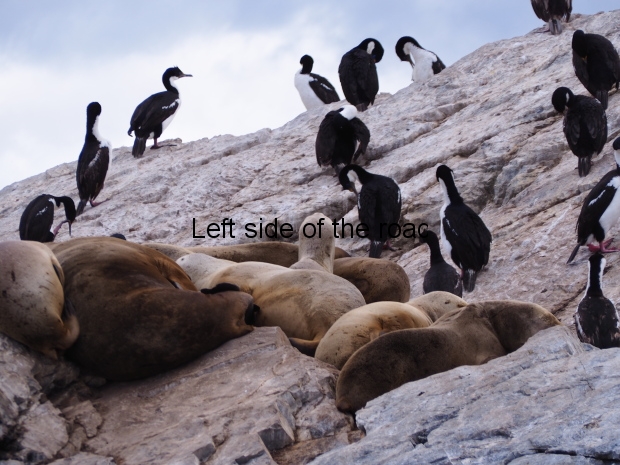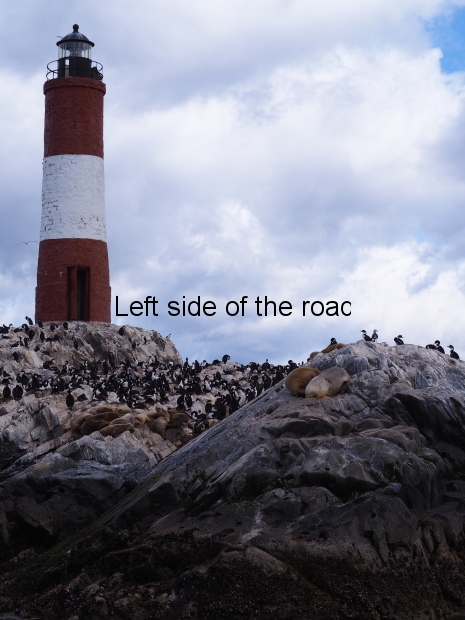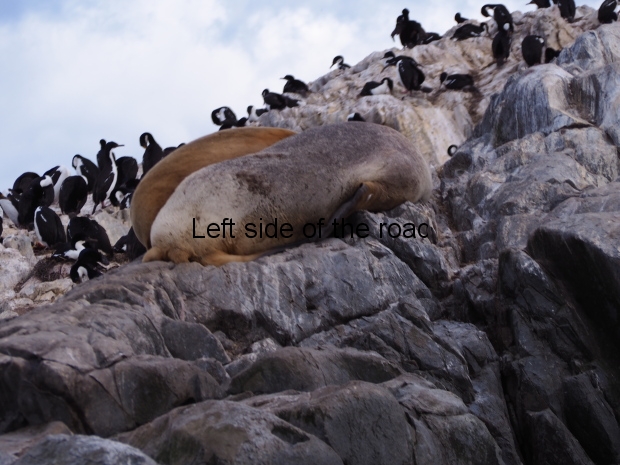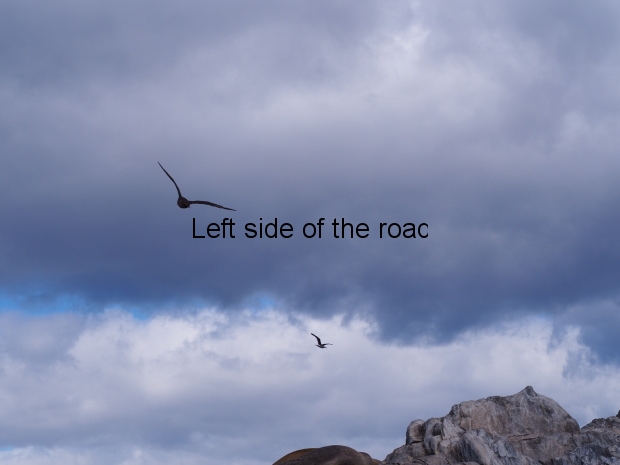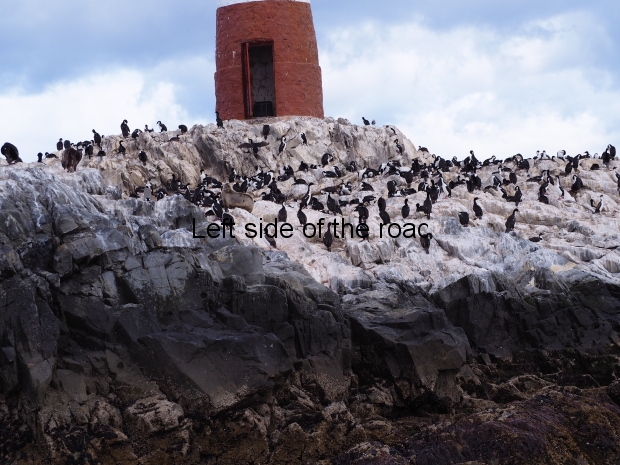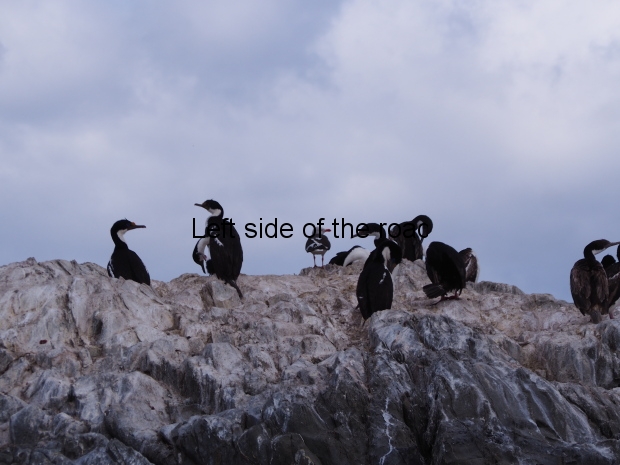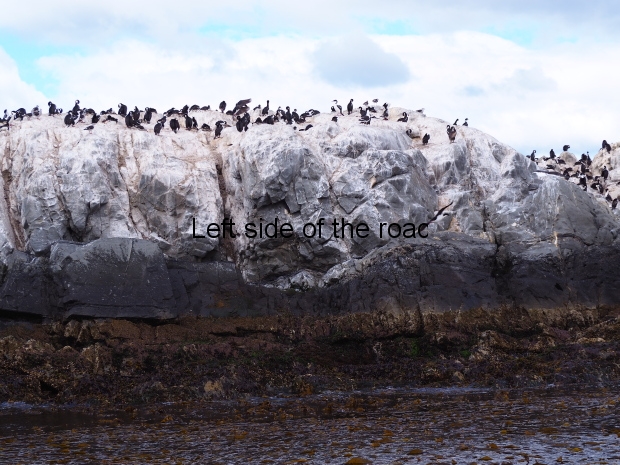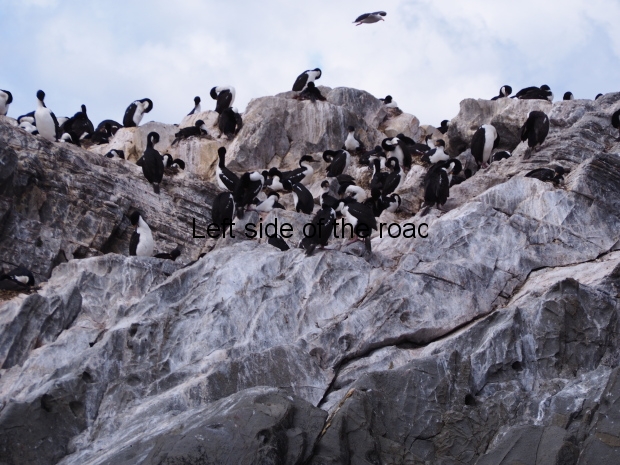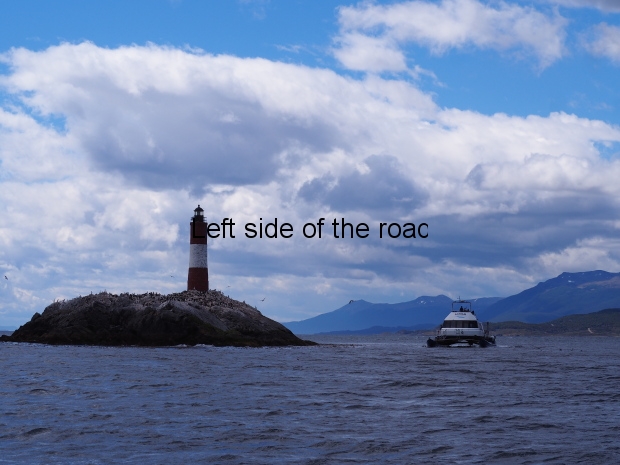
Fin del Mundo Museum Mural – Ushuaia
Indigenous representation in public art – murals and mosaics
The artistic approach towards the indigenous people is not limited to their representation in monuments or their presence in various churches in both Argentinian and Chilean Patagonia. They are also depicted in murals and mosaics in various cities of the south. In some areas non-white, non-European extraction faces are painted on many walls but they don’t, in themselves, really tell a story. Here I want to concentrate on two locations where a story is being told, one a series of painted murals and the other a mosaic telling the story of Patagonia.
Murals outside ‘Fin del Mundo’ Museum, Ushuaia, Argentina
The ‘Fin del Mundo’ – ‘End of the World’ Museum – is in what used to be the Banco de la Nacion building on the road that runs along by the sea shore in the most southerly town in the world, Ushuaia in Argentina. I was surprised by how little information was provided in the museum of the story of the indigenous tribes in this area, primarily the Selk’nam and the Yámana. (For a better presentation of the story of the indigenous peoples in Patagonia the small municipal museums in Puerto Natales, Chile, and Bariloche, Argentina are infinitely superior.)
Outside, in a small garden where some old pieces of carts and an old cannon are on display, a series of murals were painted in 2013 that aim to tell the story of the area from the arrival of the first Spanish Conquistadors in the 16th century up to the building of the large prison in the early 20th century (which I won’t be looking at here but which is at the top of this post.)
What I intend to do here is to look at those murals (5 out of 6) which directly reference the people who had lived in the region for many generations but whose lives were eventually turned up side down by the arrival of the Europeans.
There was no explanation of each picture so I have had to make a number of assumptions.
The First sighting of a Spanish Galleon

Fin del Mundo Museum Mural – Ushuaia
This image ‘shows’ a native village going about their daily life, making a canoe, collecting wood and general everyday tasks. This gets interrupted by one of the men sighting a Spanish full masted galleon and giving the warning to the rest. As is normal they have no clothes (apart from a simple loin cloth).
On the shore is a beached whale which a couple of men are in the process of cutting up. I’m not sure how accurate this might be. The Yánama would have taken advantage of an accidental beaching of whales – or the mass suicide – as they had no tradition of actually hunting them. I would have thought that impossible from the small canoes they used – and which can be seen being built in the mural.
The abduction of Yanama women by the Spanish

Fin del Mundo Museum Mural – Ushuaia
This is a strange picture with an unlikely juxtaposition of images. The main story is about the recent aftermath of a battle between the Patagonians and the Spanish who have arrived mainly – according to this picture – to kidnap the women to use them for their sexual pleasure. On the right hand side lies a dead Patagonian and on the left a dead Spanish soldier – the victims of the struggle.
In the background there are more Spaniards arriving from the galleon and in the top right hand corner there are a couple of canoes with a single individual in each.
Strangely on the mid right hand side a couple of men are beating some seals to death. Although it surely happened you wouldn’t have had a community of either of the Ushuaia tribes right next to a seal colony – the seals are today, and probably have been for time immemorial, out on the rocky, uninhabited and uninhabitable islands of what is now called the Beagle Channel.
The difference of the dress of the two opposing forces is made even clearer here as the Spaniards are wearing armour and have swords and guns as opposed to the simple spears of the Patagonians.
HMS Ocean

Fin del Mundo Museum Mural – Ushuaia
The next in the series moves a couple of centuries into the future and here we see an interaction between a couple of canoes full of Patagonians and a rowing boat full with Englishmen from the Royal Navy ship HMS Ocean. I can’t work out what the history is here. I’ve checked and can find no record of any Royal Navy Ship with the name Ocean being involved in any way whatsoever with the indigenous peoples of Tierra del Fuego.
The image seems to represent the survivors of a shipwreck being attacked – or at least harassed – by a group of Fueguinos. Whatever the case the local people are seen as being hostile to the Europeans who have survived a disaster but instead of being helped they are being placed in an even more dangerous and life-threatening situation. Without historical context this gives the impression that the local people were naturally aggressive and unreasonable in their relations with ‘innocent’ sailors – as if the British Royal Navy was a charitable organisation rather than an instrument for the expansion of the British Empire.
Survivors of a shipwreck

Fin del Mundo Museum Mural – Ushuaia
This has an even stranger combination of images and here I don’t know why the single indigenous person has been brought into the picture. The image depicts a ship wreck somewhere in the area. There’s no real landmarks to say where it is definitely but although ships might have gone down in the Beagle Channel I would have thought that the problems and dangers would have been greater further out towards the Atlantic.
However, due to the strong winds (referenced by the scarf and hair of the red haired woman in the top right) a ship has been run aground. It has been damaged but not in such a manner that the people cannot get off on to dry land. There are a number of confusing images here which seems to juxtapose a series of events that would have happened over a period of time but which are shown taking place concurrently.
Two men are seemingly trying to anchor the ship to the land, a task I would have thought would challenge even the most adept super hero. At the same time another male is stacking savaged valuables from the vessel on dry land. In the background is another ship which confuses me. There is smoke rising up from the bow area as if it were on fire. From that ship a boat is coming to shore where the main group is already. Are they coming as rescuers or are they also shipwrecked?
Whatever the confusion that is created in the picture or in my mind when thinking about it what I want to direct attention to here is the image of the single (yet again) naked Patagonian who is crouched down and is warming his hands over a small fire. This fire is also being used to dry clothing and a pair of shoes. Beside and behind him are two whites, a male and a female, the woman looking as if she has just seen a ghost and the man looking as if he has just fallen asleep.
I honestly don’t understand why the Patagonian male is there. I don’t understand anything in the picture but his presence even more. Why was he on the ship? Why is he still naked at a time that the indigenous people were being forced to abandon their own traditional form of dress for that used by the European invaders?
My point here is that we have, yet again, a reinforcement of the difference between the European settlers and the people who were there before they decided to arrive and take all the land.
The European Patagonian idyll

Fin del Mundo Museum Mural – Ushuaia
The final picture in this series I want to present is one that doesn’t have any indigenous presence at all but , in context, says a lot about how the settlers saw, and still see, themselves. This is a domestic image inside one of the so-called ‘settler/pioneer’ homes. It comes straight out of ‘The Waltons’ or ‘Little House on the Prairie’.
It’s an image of total harmony. The family is happy, comfortable and living a good life at the level of the expectations and capabilities of the time. The mother is brushing her daughter’s hair – the girl studying at the kitchen table, her books in front of her. The dutiful son is bringing in an armful of firewood he has just collected – he is wearing outdoor clothes. The father, with whom the son has been collecting wood, carries a large log over his left shoulder and in his right hand he carries an axe. In the background the grandmother is knitting.
There’s a large, blazing stove on the left and on the right an equally modern, cast iron cooking range. A large ham hangs from the wall, together with pots and pans from the ‘old country’. A cat and dog, not working animals but pets, sit and sleep on the floor next to a toy cart. They are all well dressed and shod. They are warm, healthy and content. Through the window can be seen a steamship and there’s a snow capped mountain in the distance. The scene is placed in the region of Ushuaia but here, in this comfortable scene, there is no room for the indigenous people.
This is what they didn’t achieve. This is why they have been marginalised, worked to death, killed for their resistance and the reason why they had to make way for ‘progress’.
The traditional way of life has been destroyed to make place for bourgeois mundanity. The traditions and way of life of the indigenous people have now become a quaint thing of the past. They have lost their land, their dignity, their culture, their future.
They have had to make way for the European future.
This series was produced by a group of local artists in 2013 and I’m surprised that they still seem to be perpetuating the stereotypes into the 21st century.
Or is it me that just doesn’t get?
Mosaic at school on Avenida Cristobal Colon, Punta Arenas, Chile

Mosaic – School – Av Crisotbal Colon – Punta Arenas
Although you come across quite a lot of murals – rather than graffiti – in the towns throughout both Argentinian and Chilean Tierra del Fuego I only came across one public mosaic and that was on the wall of a school which was by the waterside in the Chilean town of Punta Arenas.
This mosaic is an amalgam of many of the objects, animals, mythology and history of the southern part of the South American continent. When it comes to the indigenous people there are only a couple of times where they appear but, yet again, it’s in the same manner as we have seen elsewhere.
Has anyone ever asked the remaining members of these persecuted groups what they think of this manner of representing or depicting their culture? Do they care? Or have they been so defeated and marginalised that have accepted the inevitable?
Anyway, to the mosaic.

Mosaic – Punta Arenas
It will come as no surprise that ‘naked with a bow and arrow’ is also on this mosaic. There’s one figure standing and one figure kneeling, both just about to let loose their arrows.

Mosaic – School – Av Crisotbal Colon – Punta Arenas
The other indigenous representation is in the two figures from the Selk’nam culture. This was all part of the initiation ceremony (called the Hain) for young men before they were accepted into the group as adults and was used as a method to bind the group to itself, creating a home for the initiate in which he would always be welcome. Naked (this time as it was part of an introduction into the group) the initiates would paint their bodies in a set and traditional pattern and would wear a mask. It was only when they removed their masks that they became adults.









